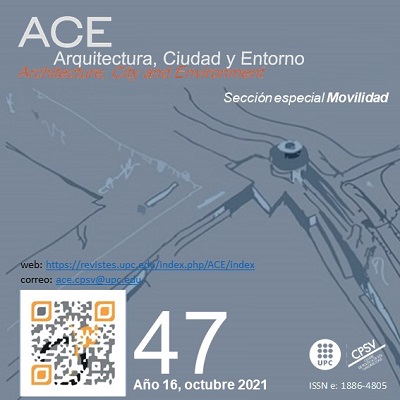Proposal for an Emergency Housing Project Under a ZIH Perspective in Guerrero, Mexico
DOI:
https://doi.org/10.5821/ace.16.47.9189Keywords:
ZIH indicators, natural disasters, federal governmentAbstract
This article presents the results of a comparative study of emergency housing, in three locations in the state of Guerrero, Mexico, and proposes recommendations to build them under the concept of “low impact housing”. The objective of this research is to analyze the state of neutrality of the components of an emergency housing project in Mexico financed through public resources, from the viewpoint of the CO₂ emissions generated from its use, and also analyzing the level of thermal habitability for its occupants. The applied methodology is the ZIH concept (Zero Impact Housing) adapted to each stage of use, which considers variables such as Soil, Water and Energy. The issues were also addressed under a new sustainability approach associated with four pillars; governmental, social, economic and environmental. This research allowed to generate recommendations for the development of an emergency housing project in Mexico, integrating elements that increase habitability by up to 42% and decrease annual energy costs by up to $28,772.60 pesos. The present methodology is expected to serve as a reference for future analyses in other regions of the country or in Latin America. The current housing policy approach seeks to serve the most vulnerable population in Mexico, but lacks considerations on the sustainable use of resources, habitability and the impact on the environment; This research generates a proposal to include these aspects under a sustainability criterion, adding to the current efforts, under a sustainable development perspective.
Downloads
Published
Issue
Section
License
| INTELECTUAL PROTECTION CRITERIA |
At this moment, it is count with the "Oficina Española de Patentes y Marcas", while global protection it is being processed by the World Intelectual Property Organization (OMPI/WIPO). Nevertheless the International Standard Serial Number Office (ISSN) has given the following numbers ISSN: 1886-4805 (electronic version) and 1887-7052 (paper version). All articles will be peer reviewed, using double blind reviewing. |
| COPYRIGHT |
The article contents and their comments are authors exclusive liability, and do not reflect necessarily the journal editor commitee's opinion. All ACE published works are subject to the following licence CC BY-NC-ND 3.0 ES http://creativecommons.org/licenses/by-nc-nd/3.0/es/ It implies that authors do not hold nor retain the copyright without restrictions but only those included in the licence. |


































